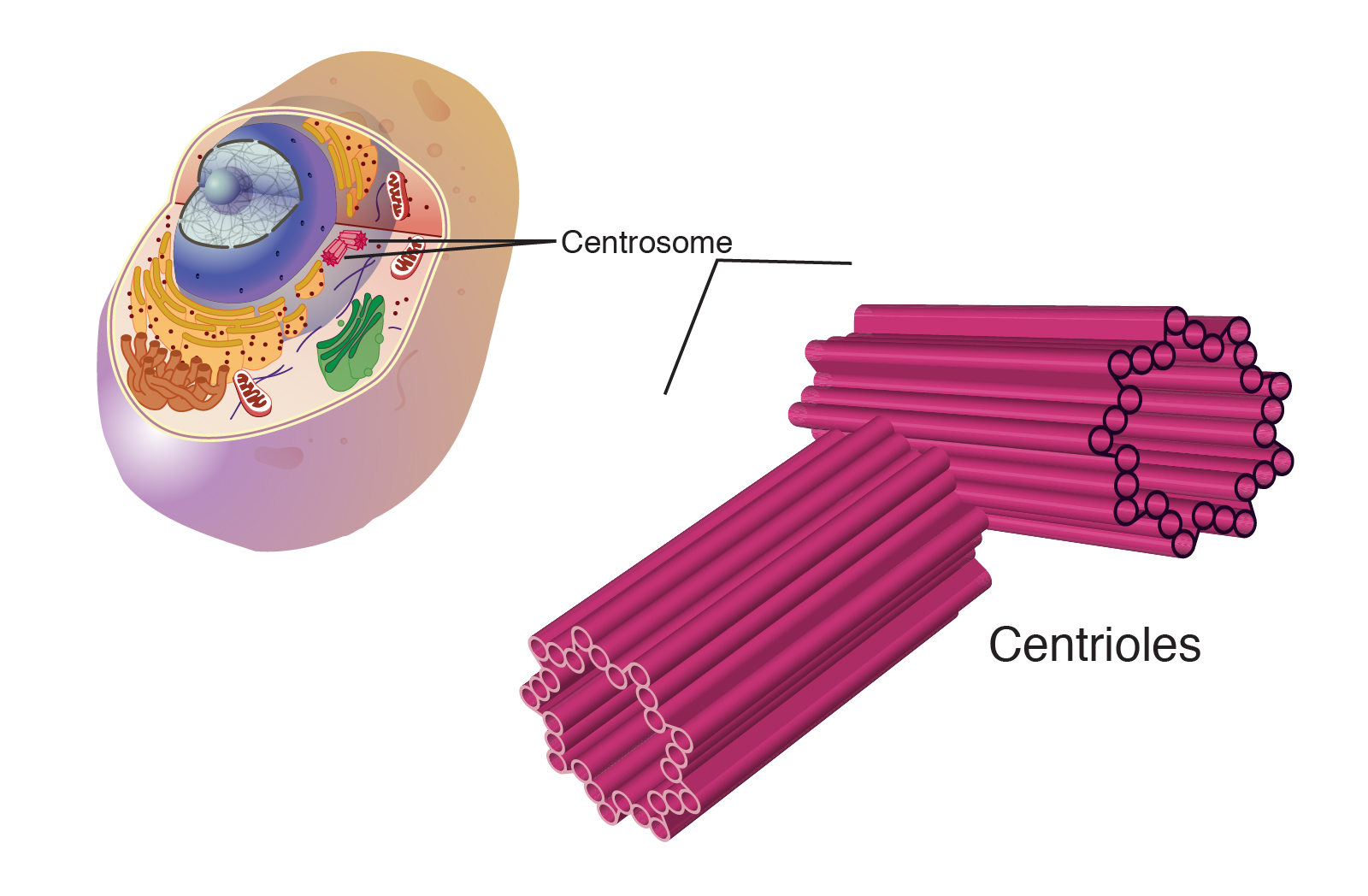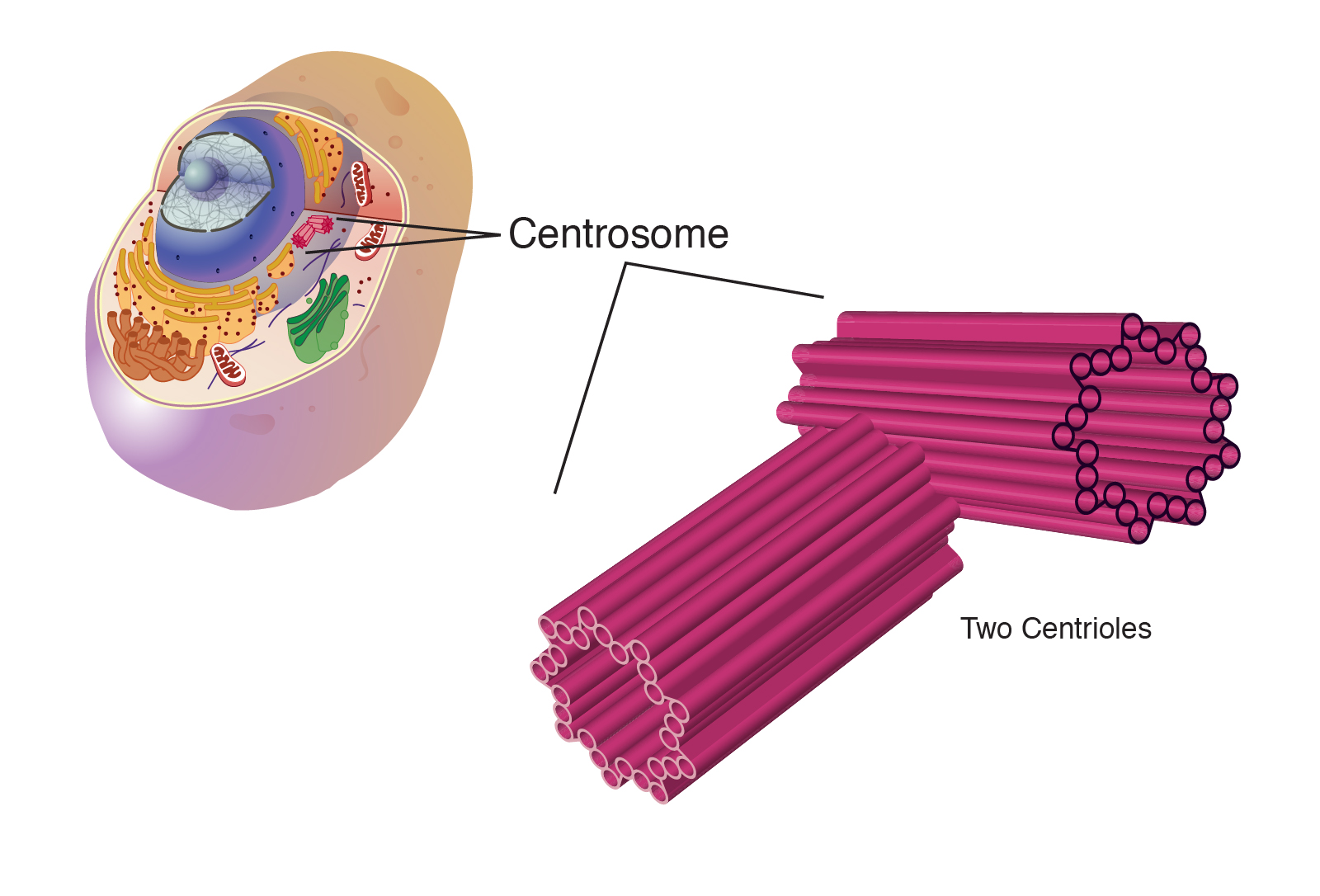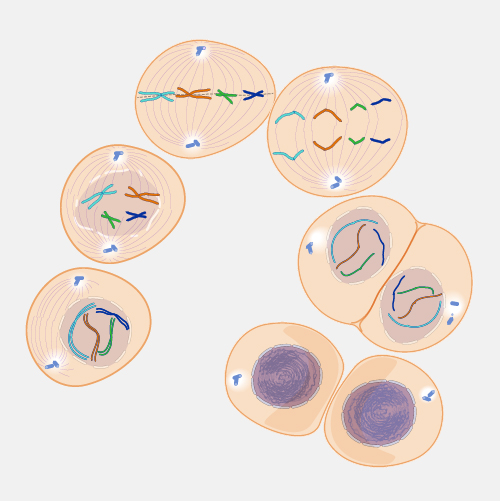Centriole
Definition
Centrioles are paired barrel-shaped organelles located in the cytoplasm of animal cells near the nuclear envelope. Centrioles play a role in organizing microtubules that serve as the cell's skeletal system. They help determine the locations of the nucleus and other organelles within the cell.

Narration
A centriole is a barrel-shaped organelle which lives normally within the centrosome. The centrosome is the area of the cytoplasm. It's next to the nucleus and within the centrosome. The word some refers generally to an organelle of some sort, like a lysosome or an endosome. Within that centrosome there are two centrioles. And centrioles are physical objects made up of things called microtubules. And those centrioles are very important for cell division. So when the cell is going to divide, those centrioles go to opposite ends of the nucleus. And when the chromosomes are condensing to undergo mitosis, the centrioles form the areas that mitotic spindle forms from. And those mitotic spindles go and attach to each of the chromosomes and pull the chromosomes to opposite ends of the cell to allow cytokinesis, then, to occur. So the centrioles are critical to allow the mitotic spindle to form, which is critical to allow cytokinesis. As to be distinguished from the centrosome, which is an area of the cell next to the nucleus where the centrioles normally live when the cell is not undergoing mitosis.




